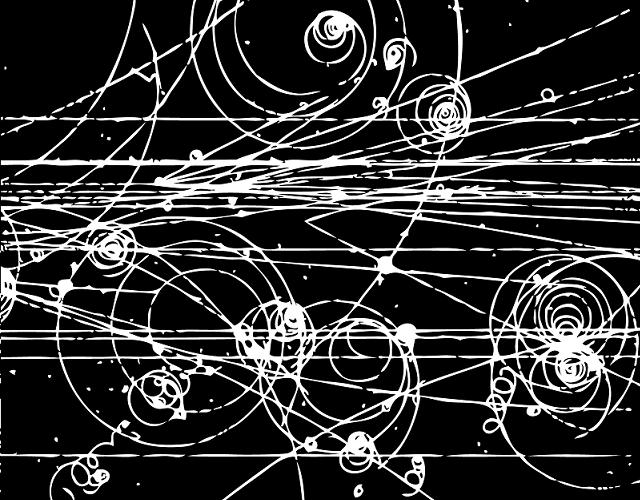| Fine
Tuned Properties of Nature |
| Phys
Constant or Parameter |
Description |
Variance*
(+/-)
|
Result
of a Non-Tuned Value |
| αs(Mz)
= 0.118 |
Coupling
constant for the strong
nuclear force |
+2% |
Protons
become so
“sticky”, that two protons can
stick together to form a di-proton pair. The di-proton would be
unstable and
rapidly decay into deuterium. This would short circuit the slow
deuterium formation process that occurred after the big bang and
currently in the interior of stars. This leads to a universe
devoid of hydrogen, since it all would have burnt up within minutes
after the universe began. |
| -5% |
A
proton &
neutron will not stick to form deuterium, an
essential step in the fusion of helium. This would prevent the
formation of stable, long lived stars like the
sun. |
| Lambda |
Cosmological
constant, which acts to
accelerate the expansion of the universe. |
+
minuscule amount |
The
small value of the
cosmological constant seems to be the
result of
a cancellation of energy in the quantum vacuum. The problem is it
cancels to 10-119 but then leaves residual dark energy
behind at the
level of 10-120. Had this cancellation been less efficient,
by a very
small margin, the universe would have expanded too fast for galaxies to
form. |
| -
minuscule amount |
If
the cancellation
effect was over corrected and the
cosmological constant was just slightly negative, the universe would
quickly collapse under the combined pull of gravity and negative dark
energy. |
| Ω
= 1.00 |
The
initial density of the universe
relative to the critical density |
+
minuscule amount |
A
minuscule increase in
the density of the universe would
have caused it to collapse under the pull of gravity within a few
million years. Not leaving enough time for stars or galaxies to form
before the universe ends. |
| -
minuscule amount |
A
tiny decrease in the
initial density of the universe would
have led to the rapid dispersion of the primordial gases before the
stars
and galaxies could form. |
| G
= 6.67x 10-11
m3/kg·s2 |
Universal
gravitational
constant |
±
minuscule amount |
This
has the same
sensitivity as Ω, with the same
effects, since the strength of gravity within general relativity is
directly related to the
rate of universal expansion. |
| mp/mn
= 0.99862349 |
Mass
of a proton relative to the mass
of a neutron |
+0.2% |
The
proton in this case
would be larger in mass than the
neutron, making it unstable. All protons would decay into neutrons, and
there would be no protons available to make atoms. |
| -1% |
The
mass difference of
the neutron and the proton is directly
related to the amount of helium produced shortly after the big bang.
Shrinking this ratio increases the helium produced so that all hydrogen
is converted to helium within minutes after the universe began. No
stable hydrogen burning stars, no biochemistry. |
| α=1/137.035 |
Fine
structure constant |
±1% |
Deviance
outside of this
narrow range will prevent the
triple alpha process from forming carbon in stars. This fortunate
alignment of the strengths of the electromagnetic force (α)
and
the strong force provides for this process. Without it, stars would be
unable to produce elements beyond helium. There would be no carbon,
oxygen, nitrogen, etc, required for life. |
| c
= 299,792 km/s |
Speed
of light |
|
The
speed of light is
related to the fine structure constant,
many terms of the metric expansion of space, the relation of energy to
mass, etc. Since these quantities are all vitally critical to the
bio-friendly nature of the universe, a minute change in the speed of
light would preclude our existence just the same. |




 When
we examine the laws of
physics, we find that the laws of
nature
are entangled by several universal constants. Often these constants
relate seemingly unconnected realms of science. Many scientists have
marveled at the chance occurrence of certain properties at just the
right strengths to permit life in our universe. This goes beyond just
allowing carbon based life to exist, but any complexity at
all.
When
we examine the laws of
physics, we find that the laws of
nature
are entangled by several universal constants. Often these constants
relate seemingly unconnected realms of science. Many scientists have
marveled at the chance occurrence of certain properties at just the
right strengths to permit life in our universe. This goes beyond just
allowing carbon based life to exist, but any complexity at
all.